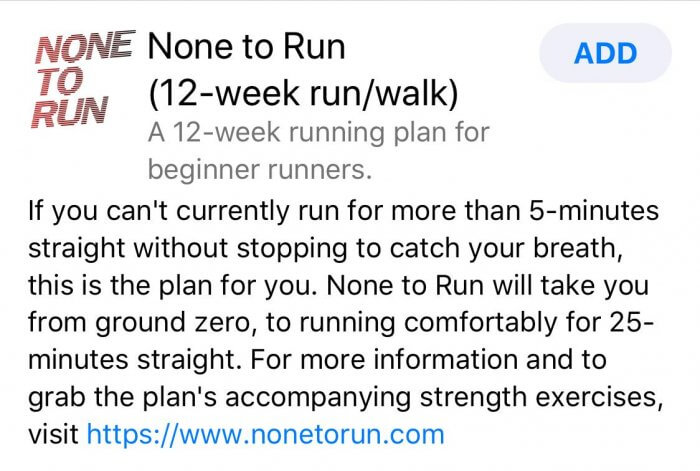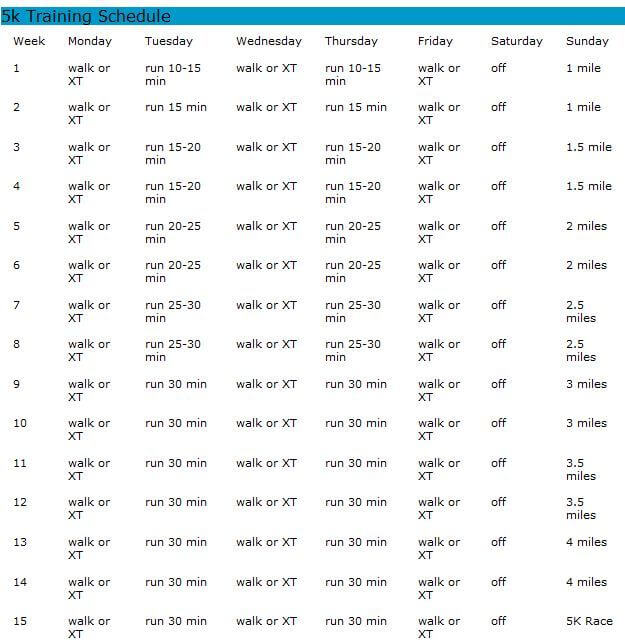Dropped out of Couch 2 5K? Try These 3 Beginner Plans Instead

If you’ve ever been a beginner runner in the last 20 years, or come back to running after a long time off, there’s a good chance you tried Couch 2 5K. I’ve done it twice!
Both times it worked very well for me. I was able to establish a consistent running habit and build up slowly enough to avoid injury. The first time around I worked my way up to half marathons, and this time around I’m now starting marathon prep.
So what’s the problem? Like any training plan, Couch 2 5K doesn’t work for everyone. I’ve met so many people who got stuck, couldn’t make the jump from one week to another, and quit before long.
Of course, there could be lots of reasons for that — maybe their life was too full to make room for regular running, or maybe they just didn’t enjoy it. But for some, and maybe for you, it was simply the wrong plan. Here’s why.
Baseline: Couch 2 5K starts with alternating 60 seconds of running with 90 seconds of walking. That might be a good starting point for many people, but for some, it is a struggle. If that’s you, a plan that starts with shorter running intervals — 30 seconds, 20, 15, or even 10 — is a good choice.
Progression: Week 3 makes a big jump, from 60 seconds of running to 3 minutes of running. Week 4 takes you to 5 minutes, then Week 5 goes to 8 minutes and then suddenly to 20 minutes. You might need a plan that breaks that progression into more steps or spend more time at each level before jumping up.
Pace: Couch 2 5K assumes you’re running a 10-minute mile pace. Of course, you can follow the plan at any pace, but in week 9 you run for 30 minutes. If your pace is slower, that means you’re not running a 5k yet. If that’s you, you’ll need a plan that accommodates slower paces and still takes you all the way to the 5K goal.
3 Alternative C25K Training Plans Proven To Work
Now, please don’t think I’m knocking the Couch 2 5K plan — again, it worked very well for me twice! But it’s not the only beginner plan out there. If it hasn’t worked for you, it doesn’t mean you’ve failed or you can’t be a runner — you just need a different plan. Here are three I recommend you take a look at:
1. None to Run
Similar in form to Couch 2 5K but with a slower progression, None to Run aims to get you running for 25 minutes straight in 12 weeks. The plan also includes short video strength workouts to help you develop those new running muscles. Other support includes a podcast, free audio downloads to guide you through the workouts, and a subscription app to help you track your progress.

Downsides? It might not get you to 5K, depending on your pace. If you like the progressions, though, you can keep adding weeks to the end of the program to increase your running time until you get there.
2. Not Your Average Runner
Running coach, life coach, and podcast host Jill Angie takes a different approach to getting you started running. Rather than trying to build up the length of your running interval, Angie recommends that you find a ratio of running and walking that feels relatively comfortable and build time, distance, and/or pace at that same ratio.
On her website, you can find a 30-day Running Start plan that guides you through trying a few different ratios. Once you find one that works — the run interval is a little bit challenging, but the walk interval is enough to get you recovered for the next run interval — you can build up to your race goal.

Start with walking the full 5K distance once a week, and gradually work your run intervals in. For your other two workouts in the week, do run-walk intervals the whole way for 30-45 minutes. This gives you a gentler introduction than Couch 2 5K, but with more time on your feet to build fitness and confidence.
Beyond the running, Coach Jill places a huge focus on mental preparation — identifying and working through the negative “inner mean girl” thoughts that get in the way of becoming a runner. Her podcast gives tons of great information and tips on what to expect at every stage of training and race day.
3. Jeff Galloway
Any running plan that incorporates regular walk breaks owes a debt to Jeff Galloway, who popularized the method more than 35 years ago. He has many free training plans available on his website, besides his many books, and he also has guided trainings on Garmin Coach.
Galloway’s philosophy is that all non-elite runners can benefit from taking regular, planned walk breaks starting from the very beginning of their workout — benefits include less fatigue, better recovery, and more even pacing.
Galloway recommends running a one-mile time trial every few weeks during training — a painful nearly-all-out effort he cleverly markets as the “magic mile”. You can then enter your magic mile time into his online calculator to get recommended training and race paces, and follow his recommendations for the best run-walk ratio for your pace.

Although his earlier plans often used 1-minute walk breaks, more recent research has shown that a maximum 30-second walk break is better for sufficient recovery without getting tight and losing too much speed. If that sounds like a lot of switching between running and walking…it is.
Check out Galloway’s YouTube videos on “gliding” technique to get a smooth, non-jarring transition between running and walking speeds. It takes some practice, but soon you’ll be finishing your 10+ mile training runs with plenty left in the tank, and passing half of the field in the last 2 miles of your race.
There are lots of great options out there for new and aspiring runners — try one of these and you’ll be tearing up the roads or trails in no time!
Latest Articles
 Is Running on a Treadmill Easier Than Running Outside?Runners have their own preferences, whether it is treadmill running, running outside on the road, or exploring trails. So...
Is Running on a Treadmill Easier Than Running Outside?Runners have their own preferences, whether it is treadmill running, running outside on the road, or exploring trails. So... Is It OK to Use Trail Running Shoes on the Road?While trail running shoes can be used on roads, especially in situations where a runner encounters mixed terrains or pref...
Is It OK to Use Trail Running Shoes on the Road?While trail running shoes can be used on roads, especially in situations where a runner encounters mixed terrains or pref... How to Fix Sore Quads After Running?Rest, ice, gentle stretching, and over-the-counter pain relievers can help soothe sore quads after running. Also, ensure ...
How to Fix Sore Quads After Running?Rest, ice, gentle stretching, and over-the-counter pain relievers can help soothe sore quads after running. Also, ensure ... 10 Fruits With The Most Electrolytes to Replace Sports DrinksThese fruits are high in electrolytes such as potassium, magnesium, and calcium, essential for hydration, muscle function...
10 Fruits With The Most Electrolytes to Replace Sports DrinksThese fruits are high in electrolytes such as potassium, magnesium, and calcium, essential for hydration, muscle function...

